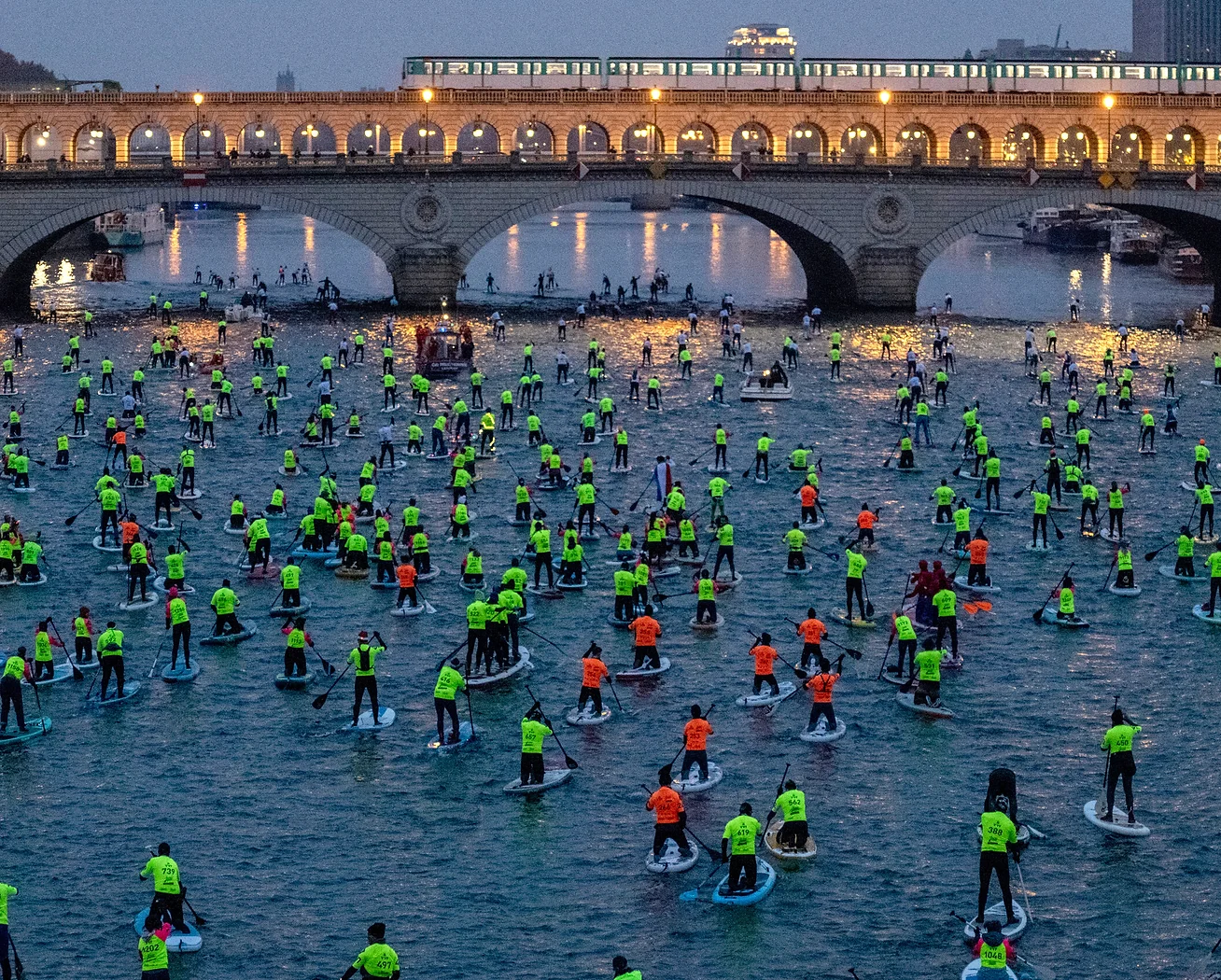Paris wishes the Seine to be sufficiently clean to permit the public to swim in parts of it by 2024
The section of the Seine running through Paris garnered unusually good headlines in 2009 when salmon were caught there, something unknown for decades. The river has been polluted by industry since the beginning of the 20th century, at least, so this boded well for ecological recovery. Swimming was formally banned there in 1923. Those defying the ban usually did so at night when they were less likely to be fined but danger was greater.
Paris wishes the Seine to be sufficiently clean to permit the public to swim in parts of it by 2024. This will see Paris host the Summer Olympics starting in late July. These will be at Bercy in the eastern 12th arrondissement, opposite the central Île Saint-Louis in the centre and by the Quai de Grenelle in the 15th arrondissement to the west. Lifeguards will keep watch and buoys mark the areas. On the banks, there will be spaces for swimmers to change, shower and store their belongings.

The city, under Mayor Anne Hidalgo, who took office in 2014, has ambitious plans, ecologically. It expects to spend from 800 million to one billion euros (£688 to £860 million) on cleaning the water. Key to the plan is severely limiting the quantity of waste companies can dump. It intends to open 23 places for swimming from 2025, along the lines of the Bassin de la Villette in northeastern Paris. Pierre Rabadan, deputy mayor of Paris in charge of sport and the Olympic Games, commented that when folk see others swim in the river without suffering health problems, ‘they’ll be confident themselves to start going back to the Seine.’
Industrial waste is still dumped in the Seine illicitly, broken bicycles and other personal rubbish are just some of polluting waste gobbled up by the river. L’Equipe, the French newspaper devoted to sports, is one to regard plans for the river to be swimmable again as ill-fated. One resident remarked, “I will not swim, not now, not in two years or three. Look at the colour, we don’t know what is in there.” Another spoke of ‘weird things’ floating in the river: “They really need to do a proper clean-up upstream.”
The first politician in recent times to espouse such plans was Jacques Chirac when he was mayor in 1990. He promised to swim in the Seine within five years, which never came to pass, although some things he prompted made significant improvements. The city has, however, now designated a deputy, Pierre Aidenbaum, responsible for managing the river. Clean-up efforts known as the “Swimming Plan” commenced in 2018.
At one point in the 1960s, there were only three kinds of fish in the river. It now houses more than 30, ranging from eels to perch. Along with cannon-firing and hot air ballooning, one event to feature in the 1900 Summer Olympics in Paris, but not today, was angling. Bill François of the Paris Fishing Federation tells of how none of the fish caught then was larger than a human hand, but now, there are catfish that are two metres (seven feet) long. Heavy rain causes problems by flushing hazardous amounts of e-coli, as well as other bacteria, into the Seine.
When the 19th century sewers overflow, their contents end up in the river. The authorities lament that this is only after exceptionally heavy rainfall and for a relatively short time. Samuel Colin-Canivez, who is in charge of sanitation in Paris, described the Seine as a “safety valve for the sewage system.” Without it, wastewater would back up into people’s houses. This led to temporary closure of the swimming pools at Bassin de la Villette in 2017.
A massive basin is now planned to accommodate the rainwater. Construction work is visible from Austerlitz station, before the Pitié-Salpetrière hospital, site of Princess Diana’s death following a car crash in 1997. When complete, however, the structure will be invisible, with trees growing in a garden above. It is 34 metres (112 feet) deep and 50 metres (164 feet) wide, sufficient to contain water for 20 Olympic-size swimming pools. An EU directive governs how much faecal bacteria can be present in swimming areas.
When the river officially opens for bathing, there will be extensive testing every day. Houseboats berthed on the Seine now require connection to the sewage network instead of discharging directly into the river. Efforts are afoot to rectify poor plumbing in the city that sometimes sees wastewater pumped into storm drains. A tree-planting programme is underway across the city, so the soil will be able to absorb more rain.
It was the Parisii, a pre-Christian Celtic tribe, who established Paris beside the Seine in the 7th century BCE. Before the 20th century, swimmers in the Seine were commonplace. The city was the site of the Summer Olympics in 1900, and there were seven men’s swimming competitions on the Seine betwixt the Asnières bridge and the suburbs of Courbevoie.

A fashionable swimming competition, the Traversée de Paris à la Nage, saw amateur swimmers in their hundreds in the Seine starting in 1905. It still took place until after the Second World War, when strict enforcement of the ban began. Dan Angelescu is a scientist who tracks the Seine’s water quality for the city government. Of the present endeavours, he declared, “It will create waves, so to speak, across the world because a lot of cities are watching Paris.”






















